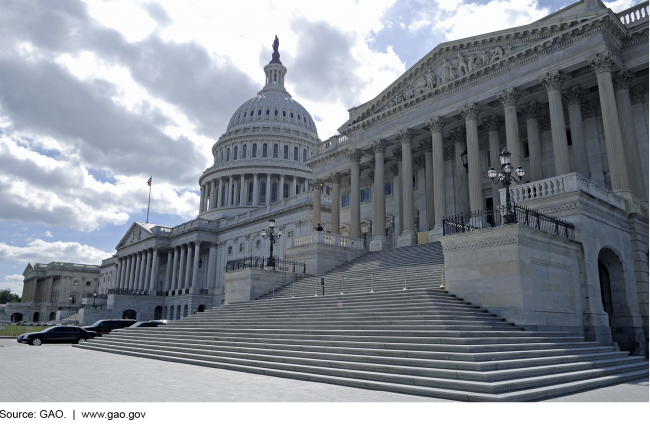Sexual Assault: Information on the Availability of Forensic Examiners
Fast Facts
A government survey estimated that 323,450 people in the U.S. age 12 and up were victims of sexual assault in 2016.
Studies show that exams conducted by specially trained sexual assault forensic examiners may result in better physical and mental health care for victims and produce higher quality evidence.
This testimony discusses our earlier work assessing what is known about the availability of these examiners and the challenges to maintaining a supply of them in some areas. These include:
limited availability of training
lack of support from hospitals or law enforcement
low retention rates due to the demanding work

A photo of Capitol Hill in Washington, DC.
Highlights
What GAO Found
GAO's March 2016 report examining the availability of sexual assault forensic examiners found that only limited nationwide data existed on the availability of sexual assault forensic examiners—both the number of practicing examiners and health care facilities that had examiner programs. At the state level, GAO found that, in three of the six states it selected to review, grant administrators or officials from sexual assault coalitions were able to provide estimates of the number of practicing examiners and, in all six states, they were able to provide information on the estimated number of examiner program locations in their state. However, officials in all six selected states told GAO that the number of examiners available in their state did not meet the need for exams, especially in rural areas. For example, officials in Wisconsin explained that nearly half of all counties in the state did not have any sexual assault examiner programs available and officials in Nebraska told GAO that most counties in the state did not have examiner programs available. As a consequence, officials said victims may need to travel long distances to be examined by a trained examiner. In health care facilities where examiners were available, they were typically available in hospitals on an on-call basis, though the number available varied by facility and may not provide enough capacity to offer examiner coverage 24 hours, 7 days a week.
GAO's March 2016 report also found there were multiple challenges to maintaining a supply of examiners, according to its review of the literature and interviews with officials in the six selected states. These challenges include:
Limited availability of training. Officials in five of the six selected states reported that the limited availability of classroom, clinical, and continuing education training opportunities is a challenge to maintaining a supply of trained examiners. For example, officials told us that there is a need for qualified instructors to run training sessions.
Weak stakeholder support for examiners. Officials in five of the six selected states reported that obtaining support from stakeholders, such as hospitals, was a challenge. For example, hospitals may be reluctant to cover the costs of training examiners or pay for examiners to be on call.
Low examiner retention rates. The above-mentioned and other challenges, including the emotional and physical demands on examiners, contribute to low examiner retention rates. Officials in one of the selected states estimated that while the state trained 540 examiners over a two-year period, only 42 of those examiners were still practicing in the state at the end of those 2 years.
Officials described a variety of strategies they have employed that can help address these challenges, such as implementing web-based training courses, clinical practice labs, mentorship programs, and multidisciplinary teams that respond to cases of sexual assault.
Why GAO Did This Study
In 2016, about 323,000 individuals age 12 or older were reported victims of sexual assault, according to the Bureau of Justice Statistics. Studies have shown that exams performed by sexual assault forensic examiners—medical providers trained in collecting and preserving forensic evidence—may result in better physical and mental health care for victims, better evidence collection, and higher prosecution rates. Yet, concerns have been raised about the availability of such examiners. The Department of Justice administers grant programs that can be used by states and other eligible entities to train and fund examiners.
This statement summarizes GAO's findings from its March 2016 report (GAO-16-334) describing (1) what was known in 2016 about the availability of sexual assault forensic examiners nationally and in selected states and (2) the challenges selected states faced in maintaining a supply of sexual assault forensic examiners. For that report, GAO reviewed literature on the availability of examiners and challenges training and retaining them. GAO also interviewed knowledgeable officials, including recipients of federal sexual assault examiner related grants and officials from sexual assault coalitions in six states (Colorado, Florida, Massachusetts, Nebraska, Oregon, and Wisconsin) selected to achieve variation in factors such as population and geographic location.
For more information, contact A. Nicole Clowers at (202) 512-7114 or clowersa@gao.gov.
